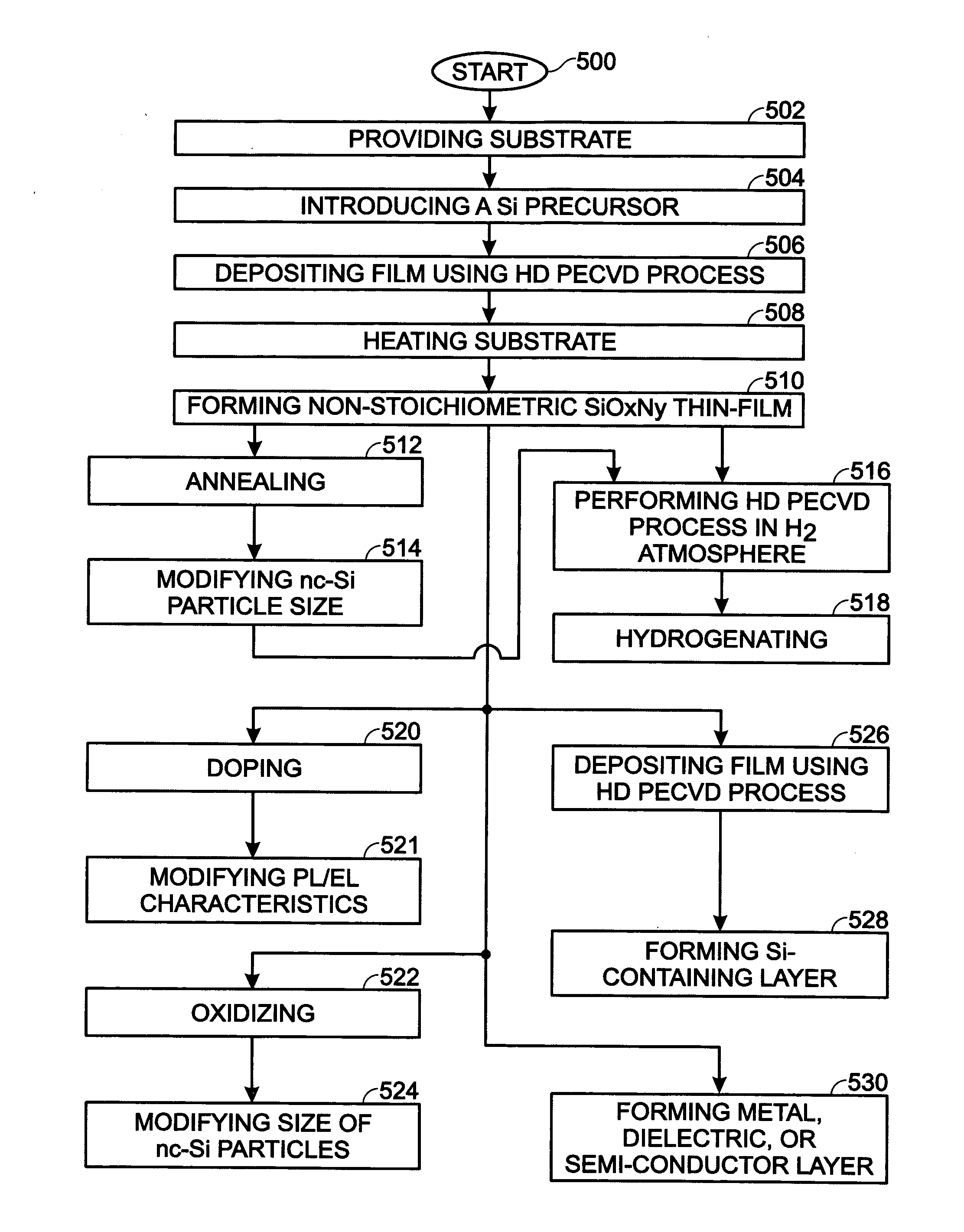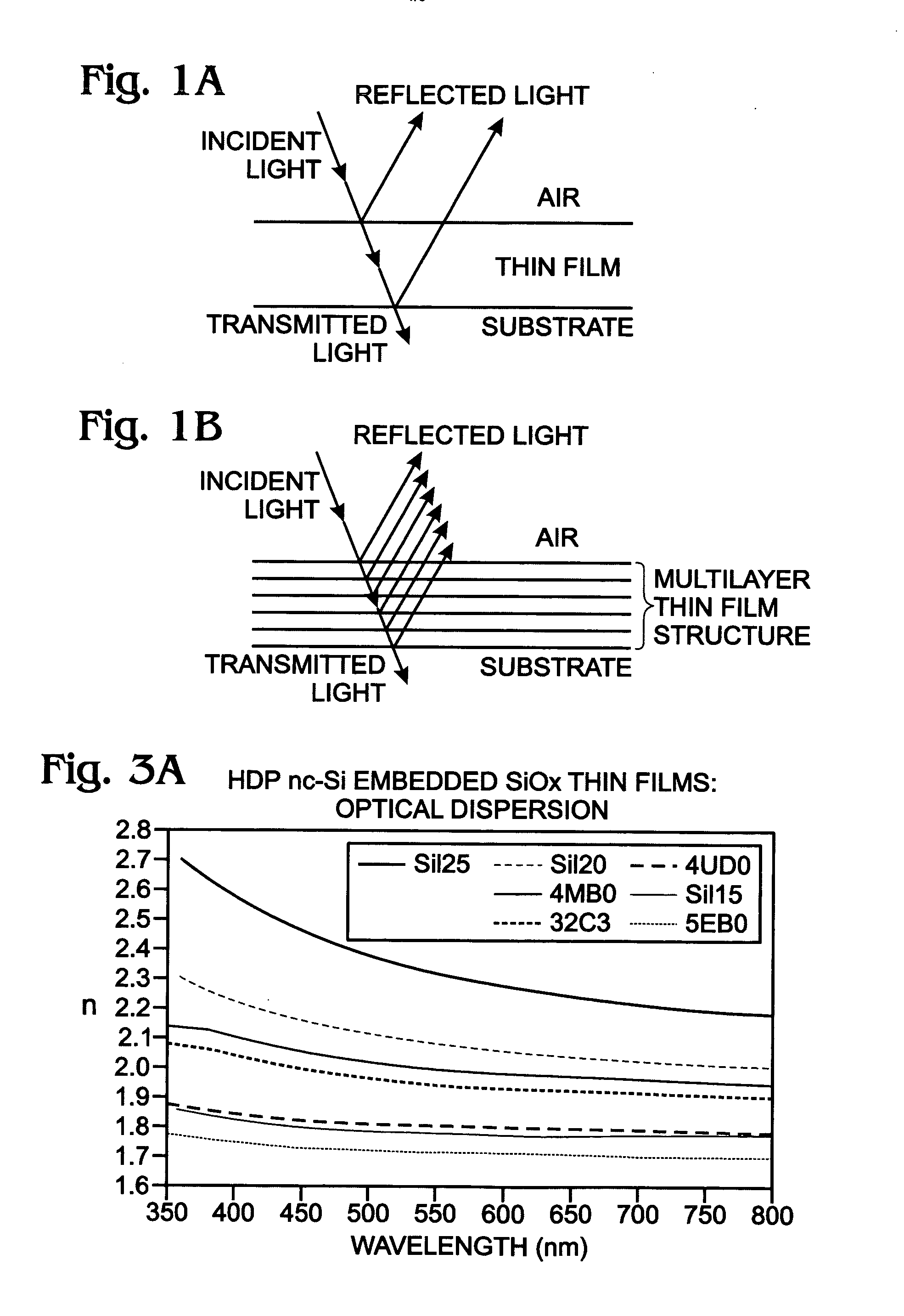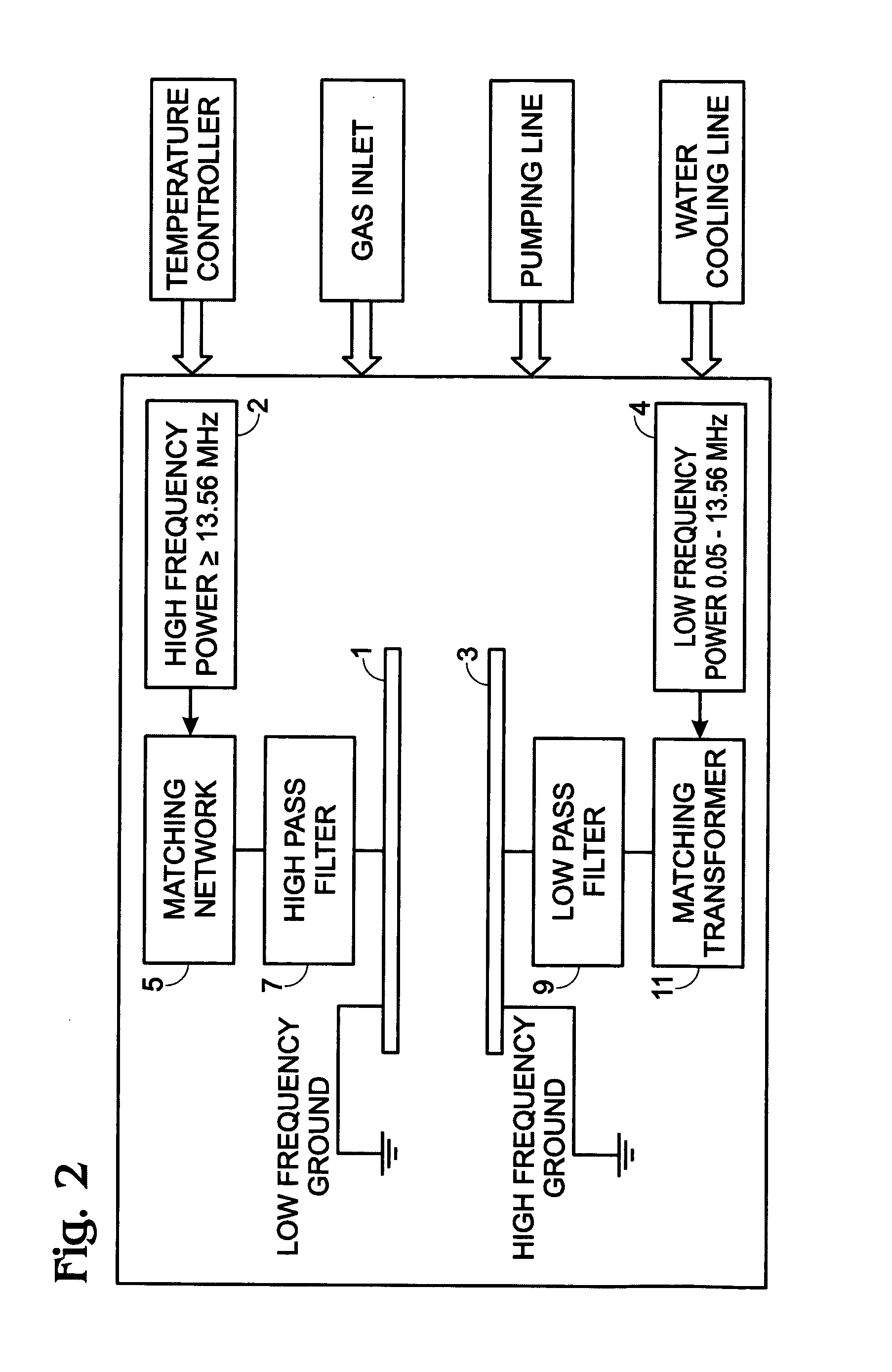High density plasma non-stoichiometric SiOxNy films
a non-stoichiometric, high-density technology, applied in the direction of instruments, optical elements, plasma techniques, etc., can solve the problems of low plasma density, inefficient materials for optoelectronic devices, and inability to provide the wide range of optical dispersion characteristics required. , to achieve the effect of wide process margins and wide optical dispersion
- Summary
- Abstract
- Description
- Claims
- Application Information
AI Technical Summary
Benefits of technology
Problems solved by technology
Method used
Image
Examples
Embodiment Construction
[0034] SiOXNY, both stoichiometric and Si rich (non-stoichiometric) films, can be fabricated using a high-density plasma (HDP) process, with many similarities to the processes previously presented in parent application Ser. No. 11 / 418,273. The process enables the fabrication of many possible device structure combinations, both single and multilayer, including the following materials: nc-Si embedded SiOx, SiNx, SiO2, Si3N4, and non-stoichiometric SiOXNY (X+YX or SiOXNY films can be fabricated under similar power / pressure range as described previously for SiOX films, however, the precursors are different.
[0035] A non-stoichiometric SiOXNY thin-film, as used herein, is understood to be a film with nanocrystalline (nc) Si particles, and may also be referred to as a Si-rich SiOXNY thin-film. The term “non-stoichiometric” as used herein retains the meaning conventionally understood in the art as a chemical compound with an elemental composition that cannot be represented by a ratio of we...
PUM
| Property | Measurement | Unit |
|---|---|---|
| temperature | aaaaa | aaaaa |
| frequency | aaaaa | aaaaa |
| pressure | aaaaa | aaaaa |
Abstract
Description
Claims
Application Information
 Login to View More
Login to View More - R&D
- Intellectual Property
- Life Sciences
- Materials
- Tech Scout
- Unparalleled Data Quality
- Higher Quality Content
- 60% Fewer Hallucinations
Browse by: Latest US Patents, China's latest patents, Technical Efficacy Thesaurus, Application Domain, Technology Topic, Popular Technical Reports.
© 2025 PatSnap. All rights reserved.Legal|Privacy policy|Modern Slavery Act Transparency Statement|Sitemap|About US| Contact US: help@patsnap.com



